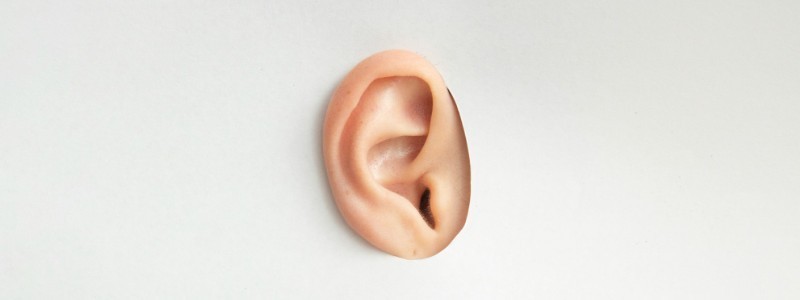Free home visits
with a local audiologist

Head of Online Medical Content

Audiology Expert at Hearing Aid UK

Overview | What is conductive hearing loss | Hearing aids for conductive hearing loss | Conclusion
Hearing aids for conductive hearing loss amplify sound to bypass obstructions in the outer or middle ear. These devices help overcome issues like ear infections, fluid buildup, or malformations. Styles include Behind-the-Ear and bone-conduction hearing aids, which transmit sound vibrations directly to the inner ear for improved hearing.
In this article, we explore the causes and symptoms of conductive hearing loss and the technologies and innovations behind hearing aids designed to improve auditory experiences for those facing this particular type of hearing loss.
Among the various types of hearing loss, conductive hearing loss has its own set of unique difficulties. Fortunately, advancements in audiology have led to the development of specialised hearing aids that address the specific needs of individuals with conductive hearing loss.
Conductive hearing loss is characterised by difficulties in sound transmission through the outer or middle ear. Unlike sensorineural hearing loss, which involves damage to the inner ear or auditory nerve, conductive hearing loss typically develops with issues in the ear canal, eardrum, or middle ear.
The common causes of conductive hearing loss include ear infections, fluid accumulation, earwax blockages, or abnormalities in the ear's structure.
Are hearing aids used for conductive hearing loss? Yes, those with conductive hearing loss often experience a reduction in sound volume, muffled sounds, and difficulty hearing faint or distant sounds. Traditional hearing aids designed for sensorineural hearing loss may not be as effective in addressing the specific challenges posed by conductive hearing loss.
Therefore, unique solutions have been developed to enhance sound transmission and improve overall hearing for those with conductive hearing loss.

Bone conduction hearing aids: One solution for conductive hearing loss is bone conduction technology. Unlike traditional hearing aids that amplify sounds through the ear canal, bone conduction hearing aids bypass the outer and middle ear entirely. These hearing aids work by transmitting sound vibrations directly to the inner ear through the bones of the skull.
A bone conduction hearing aid typically consists of a small device placed on the bone behind the ear. This device sends vibrations through the bone, stimulating the inner ear and allowing those with conductive hearing loss to perceive sounds more clearly.
Contralateral Routing of Signals (CROS) and BICROS hearing aids: For those with conductive hearing loss in one ear, CROS and BICROS hearing aids offer effective solutions. CROS systems involve placing a microphone on the impaired ear and transmitting the sound to the better-hearing ear.
This helps individuals perceive sounds from both sides, improving spatial awareness and overall hearing experience.
BiCROS, on the other hand, uses two microphones, one on each ear, to enhance the reception of sounds. This technology supports conductive hearing loss in both ears, allowing them to better engage in conversations and perceive sounds from various directions.
Bone-anchored hearing aids (BAHA) hearing aids: These provide an alternative for those with conductive hearing loss caused by issues in the middle ear, such as chronic ear infections or malformations. BAHA involves surgically implanting a small device into the bone behind the ear, which then transmits vibrations directly to the inner ear.
This bypasses the damaged middle ear components, offering a more direct pathway for sound conduction.
Wearing hearing aids for conductive hearing loss offers many benefits and significantly improves daily life. These devices enhance sound transmission through the outer or middle ear, addressing issues like ear infections, fluid buildup, or structural abnormalities.
By amplifying and clarifying sounds, hearing aids restore reduced auditory capabilities, facilitating clearer communication and reducing social isolation.
Hearing aids for conductive hearing loss have undergone significant advancements, offering a range of options to address the unique challenges faced by individuals with issues in the outer or middle ear.
From bone conduction technology to unique systems like CROS and BAHA, such devices have transformed the lives of many, providing enhanced auditory experiences and improved quality of life.
As technology continues to evolve, the future holds even more promise for those with conductive hearing loss. Ongoing research and innovation in the field of audiology aim to refine existing technologies and introduce new solutions, ultimately ensuring that everyone, regardless of their hearing challenges, can fully participate in the world of sound.
Hearing aids can help with conductive hearing loss. We don't offer bone-conduction hearing aids or bone-anchored hearing aids, but we do have CROS and BICROS solutions available. However, if you think you may have conductive hearing loss, you must book an appointment with your local GP.
They will then refer you to your ENT department or an audiologist in your area. Your audiologist will decide the best solution for your hearing loss and develop a future hearing healthcare plan accordingly.
 I have difficulty hearing in noisy places
I have difficulty hearing in noisy places  High-Pitched Sounds Like Birdsong Are Fading. Do I Have Hearing Loss?
High-Pitched Sounds Like Birdsong Are Fading. Do I Have Hearing Loss?  Asking people to repeat themselves frequently. Do I have hearing loss?
Asking people to repeat themselves frequently. Do I have hearing loss? Do not spend hundreds of pounds without getting a second opinion from us.
 Not only are the prices great, but the service is fantastic! Many thanks to your team.
Not only are the prices great, but the service is fantastic! Many thanks to your team.Hearing aids offer effective treatment options. These include air-conduction hearing aids, bone-conduction hearing aids, and bone-anchored hearing aids.
Even with mild hearing loss, a hearing aid can provide significant benefits. It helps capture sounds that may be missed and can potentially prevent further deterioration of hearing.
Conductive hearing loss is less common. It's caused by an obstruction or other abnormality in your outer or middle ear, preventing sound waves from traveling through. Conductive hearing loss can be either permanent or temporary, and in some cases, it can be cured completely.
When we refer to a product as 'Latest Launch', we mean it is the latest to be released on the market.
When we refer to a product as 'New', we mean that the product is the newest hearing aid model on the market.
When we refer to a product as 'Superseded', we mean that there is a newer range available which replaces and improves on this product.
When we refer to a product as an 'Older Model', we mean that it is has been superseded by at least two more recent hearing aid ranges.